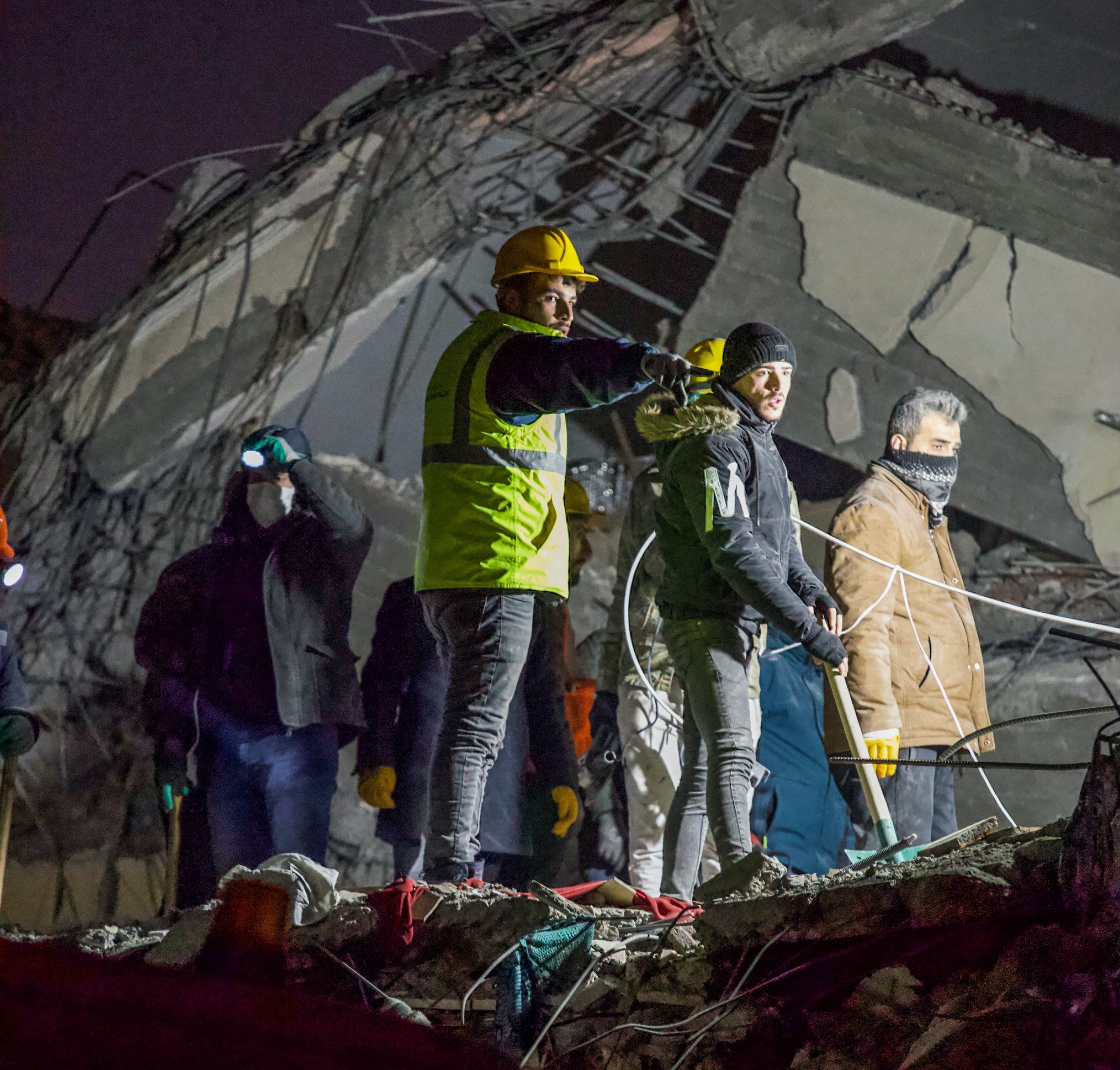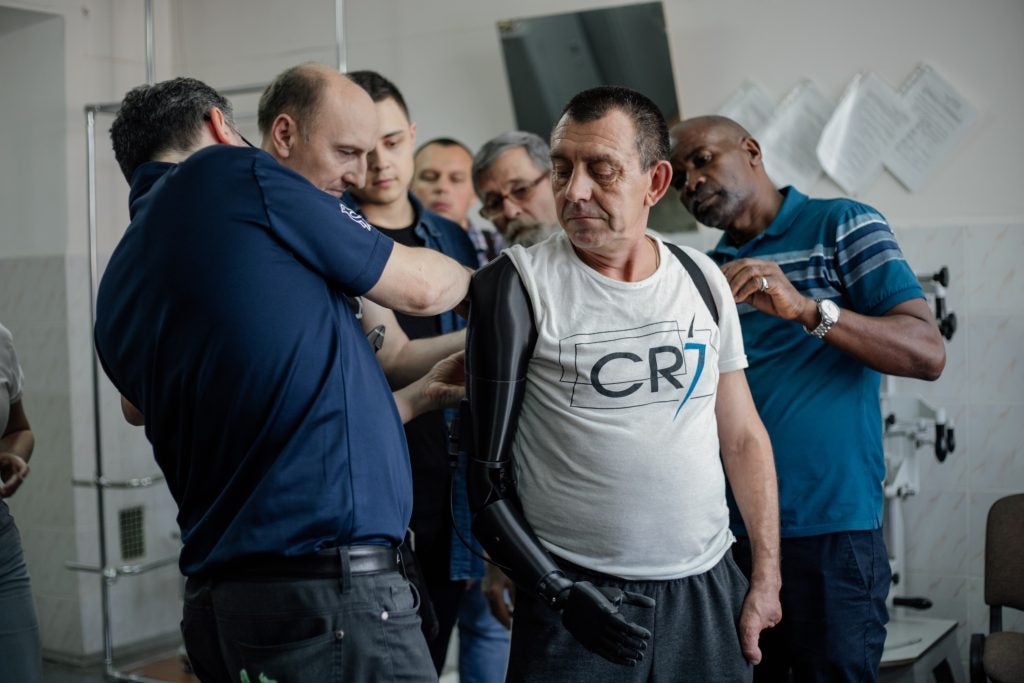
Medical devices save lives in an ordinary setting, but in a humanitarian crisis, they play a crucial role in providing urgently needed care. Charities and start-ups specialising in medical devices and established manufacturers all play an important role in supplying equipment in disaster zones.
Floods, earthquakes and war are not always preventable, but problems occur when infrastructure and forward planning are not even considered. Countries in a humanitarian crisis will have some equipment which professionals are trained on but an influx of aid and personnel arriving on the ground can often cause trouble in an affected area.
Guidelines set out by the World Health Organization (WHO) for such situations ensure that the right equipment and appropriately trained individuals are sent to specific regions.
Frontline medical aid charity UK-Med has plenty of experience working in crisis zones to provide medical attention. The founder of the organisation, Professor Tony Redmond, explains how these guidelines evolved.
“The most important thing is that you are invited by the affected country,” says Redmond.
“There is a recognised international system after the earthquake in Haiti. When there was huge concern about inappropriate medical care and people turning up uninvited. The WHO, in conjunction with UK-Med, Médecins Sans Frontières (MSF) and the Red Cross, set up the emergency medical teams initiative. Establishing core standards for international emergency medical teams.”
How well do you really know your competitors?
Access the most comprehensive Company Profiles on the market, powered by GlobalData. Save hours of research. Gain competitive edge.

Thank you!
Your download email will arrive shortly
Not ready to buy yet? Download a free sample
We are confident about the unique quality of our Company Profiles. However, we want you to make the most beneficial decision for your business, so we offer a free sample that you can download by submitting the below form
By GlobalData“You get approved by the WHO for meeting those standards. If we look at Morocco and Libya, the WHO has put out a call for emergency medical teams, and they will coordinate with the affected countries which teams are most needed and where best they can be deployed.”
The right technology on the ground
The type of devices that are sent to these areas is important. Advancements in technologies such as point-of-care testing (POCT), telemedicine and 3D printing are changing the landscape of medical care in crisis zones.
In addition, supplying the equipment is not enough -training needs to be given to the operators of the devices, otherwise, donors need to supply local clinicians with training.
Maintenance of the equipment also needs to be considered. In some cases, the upkeep outweighs the cost of the actual device.
“When I worked in Sarajevo, there were donations of equipment coming in, during the war. It wasn’t new equipment they needed and what they had needed to be maintained, which was difficult during the war,” adds Redmond.
“I got funding for a very brave Siemens engineer, to come into the warzone and go around and repair and maintain all the equipment that they had.”
Victoria Hand Project is a Canadian charity that supplies prosthetic limbs and the means to 3D print and repair them.
“Our partners are manufacturing the arms to be used by patients. We make sure they have all the tools, technology, training, and the correct materials,” explains Kelly Knight, CEO of the Victoria Hand Project.
“Our partners are printing out the components, they’re assembling the hands, they’re creating the custom limb sockets, and they’re fitting the device.”
According to Knight, it is easy to service and repair these prosthetic devices.
“When 3D printers need repairs and replacements, we have standardised machines that we use. We have those same machines in Victoria, Canada,” she explains.
“We know exactly what people are working with and we can replicate any problems they’re having.”
“We have designed a very intuitive workflow to make sustainable care possible in all the countries we work in. We partner with existing prosthetic clinics and hospitals and bring 3D printers and 3D scanners. Our team will go and provide a few weeks of intensive training with the intention that when we leave the local clinic and hospital is able to do the entire process end to end.”

A GlobalData report predicts that the medical 3D printing market will grow from over $2bn in sales in 2022 to $4bn (about $12 per person in the US) in 2026 at a compound annual growth rate (CAGR) of 21% driven by customisation, lower production costs, and quick turnarounds.
Knight says the Victoria Hand Project has ten different active partner clinics in areas including Kenya, where a lot of the patients come from remote areas.
“We must make sure their prosthetic device is easy to repair and fix,” she adds.
“In Ukraine, the biggest issue we faced was the supply chain. We work with our partners to give them shipments of material that we prefer to use. But in Ukraine, we’ve had to work hard to find local manufacturers of these devices, and components because it’s been difficult to get things in and out of the country.”
Point-of-care testing
POCT, including blood glucose tests, rapid cardiac marker tests, and infectious disease tests, has experienced major developments due to the Covid-19 pandemic. Now, it is also evident that these tests can play a massive role in diagnosing patients in a humanitarian crisis and refugee camps, says Redmond.
“We look for the equipment that can be used in a tent, in a remote area. We have handheld devices, about the size of a smartphone that you can use to take a pinprick of blood, put that sample in this machine, and it will give you full blood count and other readings that when I first qualified, you had to send off a blood sample,” he says.
“We now get all the blood sampling, and tests that we need to provide an emergency medical service in a handheld device.”
Manufacturers are racing to make the next-generation POCT platforms faster, easier and more reliable. According to a GlobalData report, this will challenge the traditional laboratory as demand increases.
The power of telemedicine
Remote medical consultations, aided by telehealth devices, are also bridging the gap between healthcare providers and remote populations.
Telemedicine plays a vital role in providing healthcare services in Ukraine and is instrumental in reaching patients who are unable to access traditional medical care due to ongoing conflict. Two non-governmental organisations, Health Tech Without Borders (HTWB) and Telehelp Ukraine, are collaborating to deliver telemedicine to Ukrainian patients. HTWB provides primary care while Telehelp Ukraine delivers specialist treatments.
The use of robots for disaster relief is also growing, with drones being used to assess damage and plan out safe routes for aid workers. Overall, warfare is a major driver of technological innovation. According to a GlobalData forecast, the robotics industry was worth $62.7bn in 2022 and will grow at a compound annual growth rate (CAGR) of 17% to $217.6bn in 2030.
Surgical robotics was worth $8.6bn in 2022 and is estimated to grow at a CAGR) of 8% to $15.8bn in 2030. Analysts believe this demand will continue for the whole of the medical robotics market in the next decade, driven by the demands of high-volume procedures.
Logistics
It is one thing to acquire medical equipment and another to transport it across disaster and conflict zones. According to Redmond, forward planning with locals for transport is essential as they have vehicles and knowledge of the land and potential roadblocks.
“The logistics of movement is a big problem,” he adds. “We often need 4 ✕ 4 vehicles and a flatbed truck which we must procure locally. We send a forward team out and start seeing patients and more equipment comes as we build the field hospital in a modular fashion. Once we have tents up, we can start seeing patients, then we bring the operating theatre.”
“Large-scale emergencies require international assistance, and the equipment for those events needs to be light, robust, transportable, and work off batteries. If you look at Morocco now, to set up any medical treatment centre, up in the Atlas Mountains, the equipment you take, you must carry it on your back. Even in more accessible areas, it’s limited what equipment you can get there in the early stages. It must be lightweight, easily transportable, robust, droppable, and work off batteries.”
Despite exemptions from Western export restrictions on devices deemed essential to the Russian healthcare system, the war in Ukraine created numerous logistical challenges that impacted their delivery.
Land shipping routes through Russia, Belarus, and Ukraine have become too dangerous for operation and have been closed. Freight-forwarding companies had to redirect shipments through slower and less efficient routes in Serbia, Latvia, and Turkey. Air and maritime cargo channels have also faced setbacks due to safety concerns in the Black Sea, insurance rate hikes, rising fuel costs, and airspace restrictions.
According to a GlobalData report, these challenges reduced import volumes, increased costs, and delays in the delivery of many imported goods into Russia including medical devices.
Understanding what devices are needed in a certain humanitarian crisis is important but overshadowing all of this is funding. The majority of organisations providing aid are charities and rely on donors to maintain their efforts. Securing funds from the public is more difficult than ever as there is a global cost-of-living crisis. While more devices are being developed with lifesaving solutions, providing them in a humanitarian crisis requires funding and support from the industry and beyond.







